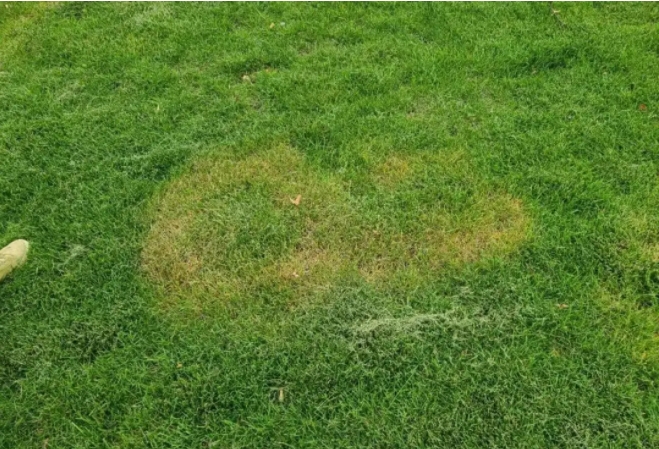When planting lawns, if the planting method is improper, the green grass may become less green and replaced by decaying yellow. Guangzhou Tianfeng summarizes the following common causes of lawn yellowing:
1. Insufficient light hinders photosynthesis. Insufficient light during the rainy season will hinder photosynthesis and reduce root function. Especially for lawns with too little fertilizer, it will affect the plants’ accumulation of carbohydrates and hinder nitrogen metabolism, leading to yellowing of the lawn.
2. Fertilization is uneven. During the process of applying nitrogen fertilizer to the lawn, some lawns turn yellow due to excessive nitrogen fertilizer, and some lawns turn yellow because no nitrogen fertilizer is applied.
3. Insect damage, aphids, grubs, etc. harm the lawn and cause yellowing of the lawn. Once found, pesticides can be used to prevent and control the lawn.
4. Poor drainage and accumulation of water on the ground. Especially in rainy seasons, the soil is too wet and causes yellowing.
5. Cutting the grass too low or the hay layer is too thick will usually lead to yellowing.
6. Due to the presence of pathogenic bacteria, the function of the roots declines and the absorption of iron is blocked, and the above-ground parts of the plants show yellowing.
7. The absorption of nutrients is unbalanced and the lawn appears yellow. For example, when a lot of lime is applied, the lack of magnesium also affects the absorption of iron; too much potassium fertilizer is used, which hinders the absorption of other salts.
8. If the roots are not pruned in time and lack sunlight, they will become yellowish.
9. Lack of nutrients necessary for the formation of chlorophyll, such as iron, magnesium, manganese, sulfur and other elements. Iron deficiency is the main reason.
10. Lack of nitrogen, protein cannot be formed and yellowing occurs.
11. The soil is deficient in copper. Copper is a necessary trace element for plant growth. Once copper is deficient in the soil, turfgrass will turn yellow.
When planting lawns, if the planting method is improper, the green grass may become less green and replaced by decaying yellow. Guangzhou Tianfeng summarizes the following common causes of lawn yellowing:
1. Insufficient light hinders photosynthesis. Insufficient light during the rainy season will hinder photosynthesis and reduce root function. Especially for lawns with too little fertilizer, it will affect the plants’ accumulation of carbohydrates and hinder nitrogen metabolism, leading to yellowing of the lawn.
2. Fertilization is uneven. During the process of applying nitrogen fertilizer to the lawn, some lawns turn yellow due to excessive nitrogen fertilizer, and some lawns turn yellow because no nitrogen fertilizer is applied.
3. Insect damage, aphids, grubs, etc. harm the lawn and cause yellowing of the lawn. Once found, pesticides can be used to prevent and control the lawn.
4. Poor drainage and accumulation of water on the ground. Especially in rainy seasons, the soil is too wet and causes yellowing.
5. Cutting the grass too low or the hay layer is too thick will usually lead to yellowing.
6. Due to the presence of pathogenic bacteria, the function of the roots declines and the absorption of iron is blocked, and the above-ground parts of the plants show yellowing.
7. The absorption of nutrients is unbalanced and the lawn appears yellow. For example, when a lot of lime is applied, the lack of magnesium also affects the absorption of iron; too much potassium fertilizer is used, which hinders the absorption of other salts.
8. If the roots are not pruned in time and lack sunlight, they will become yellowish.
9. Lack of nutrients necessary for the formation of chlorophyll, such as iron, magnesium, manganese, sulfur and other elements. Iron deficiency is the main reason.
10. Lack of nitrogen, protein cannot be formed and yellowing occurs.
11. The soil is deficient in copper. Copper is a necessary trace element for plant growth. Once copper is deficient in the soil, turfgrass will turn yellow.
Post time: Jul-03-2024

